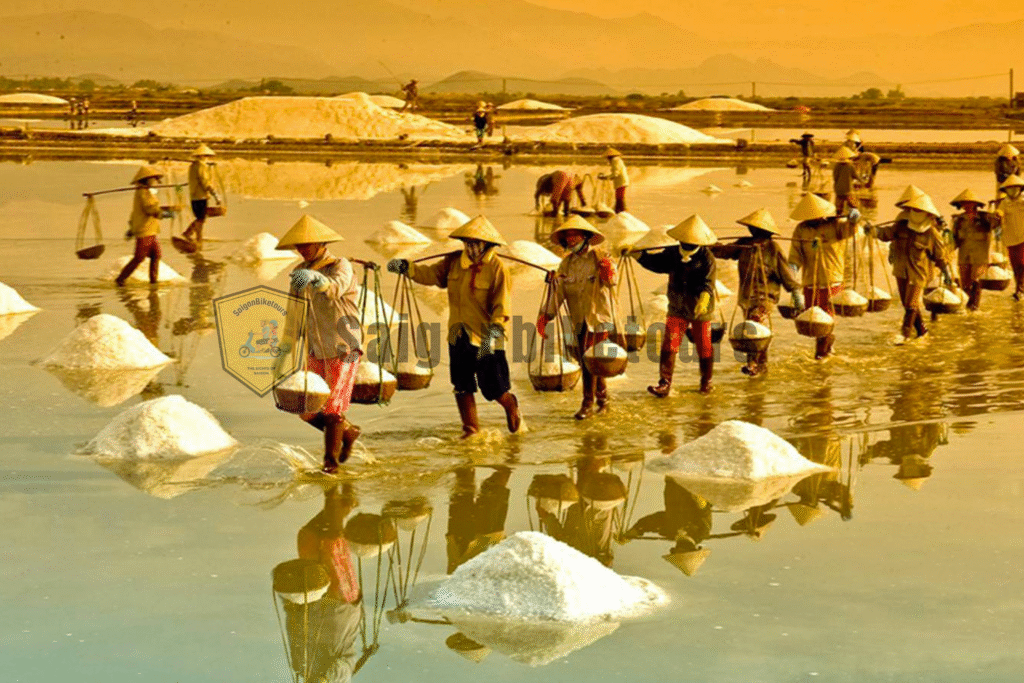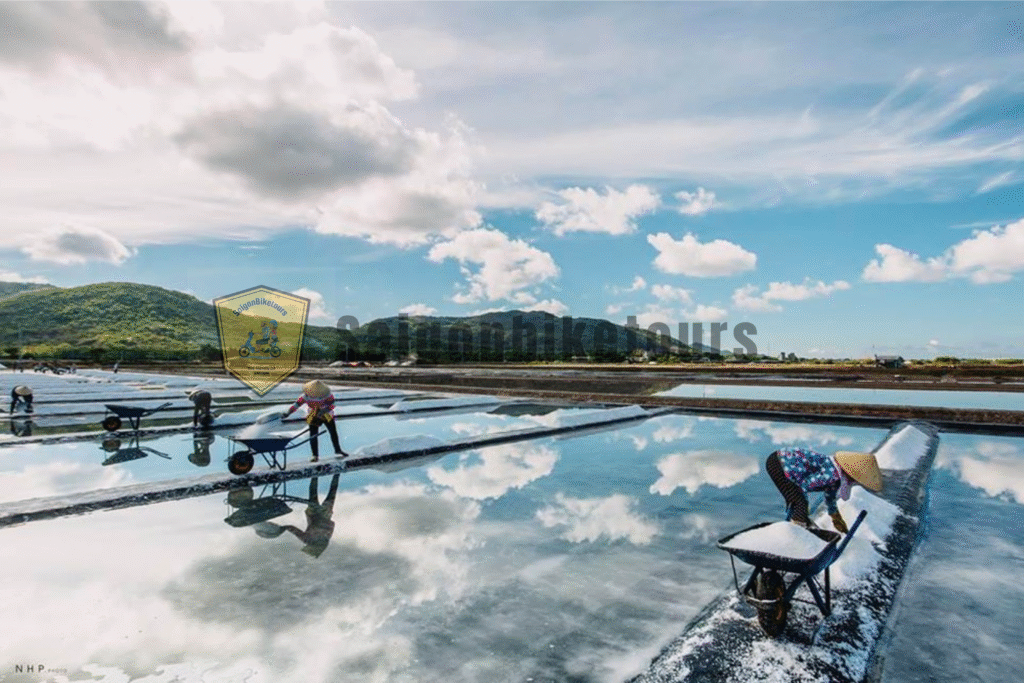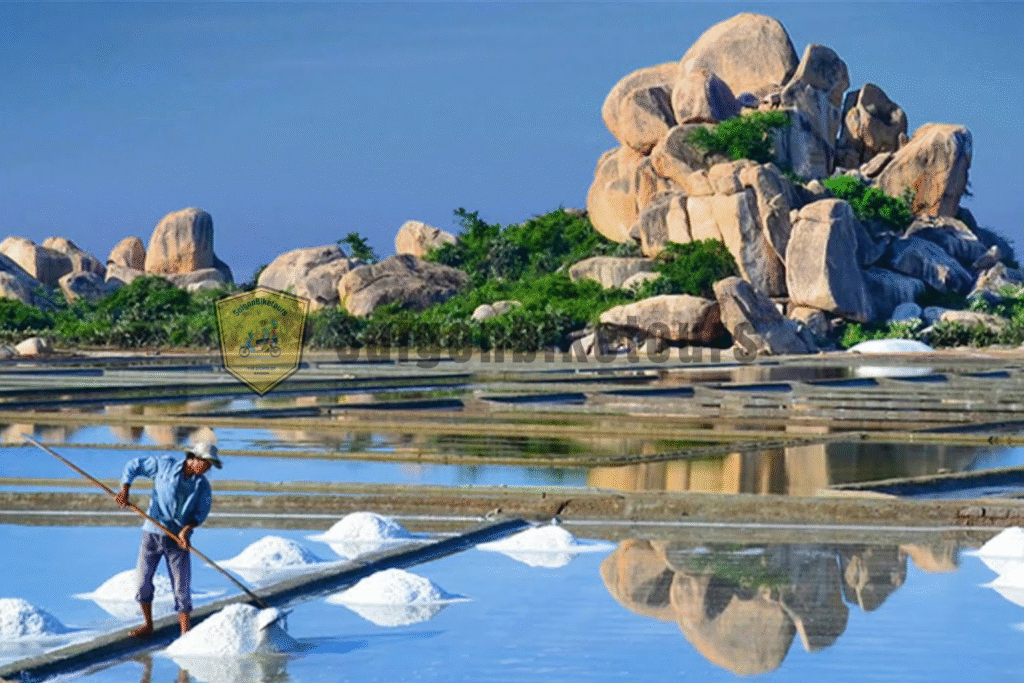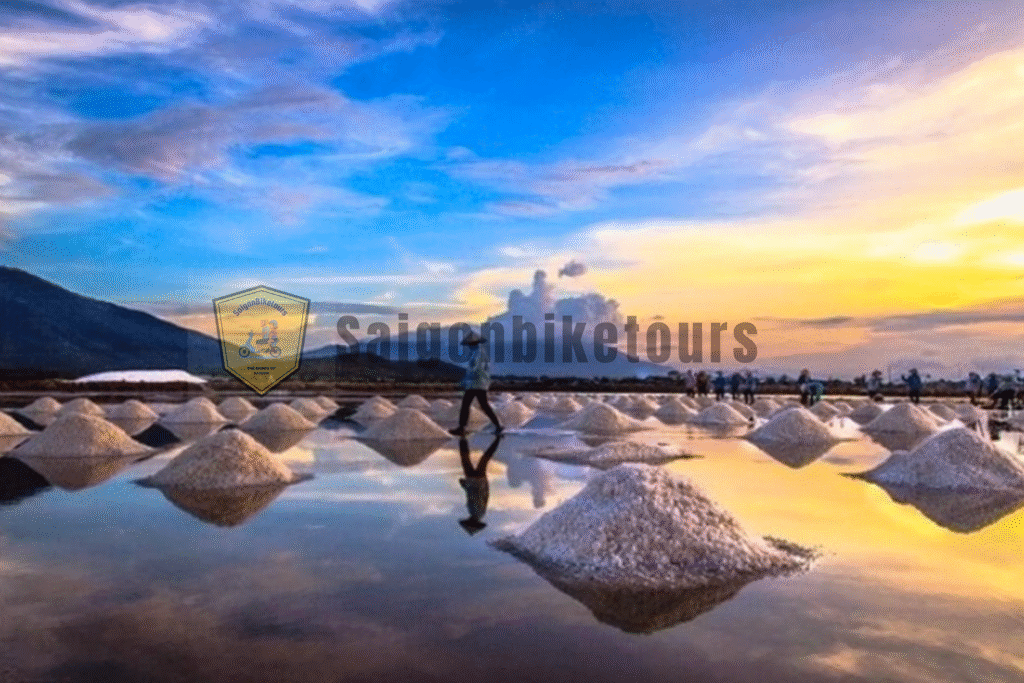Ca Na Salt Fields – The Soul of Ninh Thuan’s Coastal Culture
Cà Ná Salt Fields – The Soul of Ninh Thuận’s Coastal Culture
Located in the coastal district of Thuận Nam, Ninh Thuận Province, Cà Ná Salt Fields represent one of Vietnam’s largest and most traditional salt-producing areas. With its abundant sunlight, low rainfall, and coastal plains, Cà Ná provides the perfect natural conditions for salt farming. The bright white salt pans stretching to the horizon have become not only a vital economic zone but also a symbol of cultural heritage.
A Century-Old Tradition
Salt-making in Cà Ná has a long-standing history that began over 100 years ago. Local oral histories and historical accounts suggest that salt production began here during the French colonial era when the demand for sea salt increased. Over time, the craft became an essential part of the community’s way of life, passed down from generation to generation. Salt-making is more than just labor—it’s a legacy.

The Unique Process of Making Salt
In Cà Ná, salt is produced mainly during the dry season, from December to August, when the sun shines intensely and the wind aids evaporation. The traditional process involves preparing salt fields by leveling the land and lining it with sand or clay. Seawater is then pumped into shallow ponds and left to evaporate under the sun. As the water evaporates, salt crystals form and are raked into piles, ready for collection.
Despite the availability of industrial salt-making techniques, many families in Cà Ná prefer traditional methods. These methods ensure natural quality and purity and provide seasonal jobs for locals, particularly in poorer rural areas.

Economic and Cultural Significance
Cà Ná salt is not only consumed domestically but also exported to international markets. Its fine texture, mineral richness, and cleanliness have made it a favored choice for both household use and food processing. Economically, the salt industry supports hundreds of households in the region. It’s a major contributor to the local economy, especially in the dry months when agricultural activities are limited.
Beyond economics, salt-making in Cà Ná is embedded in the culture. The sight of salt farmers working from dawn till dusk, the rhythmic movement of tools, and the sparkling fields at sunset form a poetic image of resilience and hard work. Local festivals and art forms often reflect this heritage.

Challenges and Sustainability
In recent years, salt farming in Cà Ná has faced challenges due to climate change, rising sea levels, urbanization, and economic shifts. Erratic weather patterns have affected the evaporation process, while some salt fields have been converted for tourism or aquaculture.
However, many efforts are being made to preserve this traditional craft. Local authorities and NGOs are supporting sustainable salt production and promoting Cà Ná as a cultural tourism destination. Salt tours, where visitors can experience the process firsthand, are gaining popularity and offering alternative income for local communities.

Looking Ahead
Cà Ná Salt Fields remain a symbol of harmony between humans and nature. As Vietnam balances development with cultural preservation, the story of Cà Ná’s salt farmers stands as a powerful reminder of the value of tradition. Their perseverance, skill, and connection to the land deserve recognition and support.
Whether viewed as an economic resource or cultural gem, Cà Ná’s salt fields continue to shine—literally and figuratively—under the Vietnamese sun.
♥ Saigonbiketours ♥
